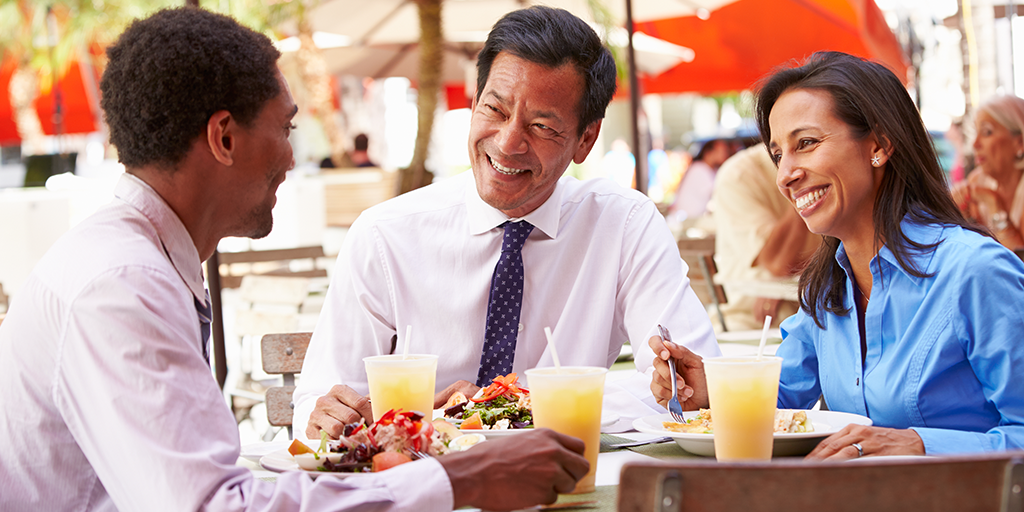So you’ve got a good dinner crowd; you’ve set up a menu with the perfect mix of comfort and creativity; and you’ve got a big box of crayons on hand, to cater to any young foodies-in-training. Think you’ve got all your bases covered?
Think again. There is one very important diner category that you may not be thinking of: the business diner.
It doesn’t matter if you’re in a large metro area or a small town, chances are there are businesses in your area. And where there are businesses, there are businesspeople seeking places to take clients, new colleagues, potential partners, and any other person they’re looking to impress and persuade.
But they’re bringing a lot more than just their business contacts to the table.
According to Concur Technologies and Table8, business diners spend 2 to 3 times more than their casual dining counterparts, on average — and plan their restaurant visits much differently.
The New Breed of Business Diner
But who is this business diner?
According to Jayaram, the traditional business diner roles fall into two categories: the per diem spender, typically a mid-level executive or manager who has a specific amount to spend per meal; and the “executive” level, who tend to spend, and expect, significantly more than any other business diner group.
Although these two roles are still very much in play, there is another group that is emerging, as well: the millennial.
True to their reputation for breaking with tradition, millennials are largely eschewing the steakhouses that have long been the meeting places for businesspeople, and instead choosing restaurants considered to have cachet.
These locations have several drawbacks for those looking to conduct business, however. Trendier restaurants tend to be louder, sometimes to the point of impeding conversation. And because they are so busy, these locations may also create more difficulties for the businessperson looking to make a reservation in a short timeline.
Because the overall industry is trending toward hyper-local foods, whole-animal preparations, and ethnic and fusion cuisine, these restaurants also tend to have more specific, menus — and therefore less broad appeal, a potential pitfall for someone who does not know their guests, and their guests’ tastes, personally.
Different Tastes, Same Needs
Although many millennials are choosing different locations to conduct business, they do have the same needs as their older counterparts.
For example, business diners frequently must plan on short timelines. According to Santosh Jayaram, co-founder of Table8 and a speaker at the recent National Restaurant Association Show in Chicago, many business diners are unaware of or don’t have specifics on their travel plans until only days prior to their trip.
Considering that these diners typically travel in larger groups than their casual dining counterparts — often including as many as six, eight, or 10 people — this short timeline puts even more stress on both the individual requesting the reservation, and the restaurateur looking to accommodate the party.
And the impact of even these smaller stresses is amplified for this group of consumers. Most business diners have more riding on the quality of each dining experience, both financially and professionally, than most diners you’ll encounter.
The experience of the restaurant is, in many ways, as much a part of their pitch, celebration, or discussion as anything else. That’s why business diners also tend to be extremely loyal to specific locations. Once they locate a restaurant that caters to these unique needs, they’re extremely likely to return, even if — and sometimes especially when — they’re not from the area.
Want some actionable tips on how to draw business diners in on a regular basis? Read on:






